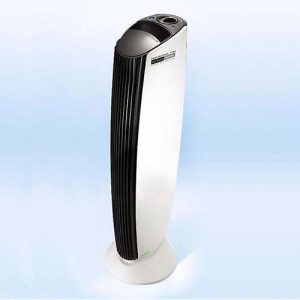
This just in: something that Townsend Brown may have figured out like 70 years ago:
Researchers at Purdue recently demonstrated their new “ionic breeze” technology that can improve the cooling rate of internal computer components by as much as 250 percent.
This is the sort of dramatic cooling improvement needed for the computer industry to develop lighter weight computers and laptops that are still powerful enough to run high-intensity programs without frying your CPU.
The researchers tested the experimental technology on a mock computer chip for observers. It works by generating ion movement between two oppositely charged electrodes. Electrons colliding with air molecules create positively charged ions that then flow toward the negatively charged electrode producing an “ionic wind.”
This ‘ionic breeze’ increases the airflow on the surface of the chip, cooling it down. Researchers used infrared imaging to show that the technology reduced heating on the mock chip from 140 degrees Fahrenheit to about 95 F.
This idea of cooling computers with the “ionic breeze” phenomenon — what Townsend Brown called “ElectroHydroDyanmics” — is a topic that my sources alluded to a long time ago without, of course, going into any actual specifics. Remember that Brown had some association with cryptography operations (like the mission in Germany..). Add to that the fact that some of the very earliest applications of computers of any kind were for cryptography (starting with Alan Turing’s “Bomb” at Bletchley Park) and you’ve got a natural association between an EHD device’s ability to move air without any moving parts and the considerable heat generated by the earliest vacuum tube computers.
This is not a subject that we’ve explored in much depth. It touches on Brown’s affiliation with the intelligence agencies — particularly the NSA — that came into being after World War II. The connections are all there, but they are tenuous at best, and proving anything is…. well, you know how THAT goes… But this latest “discovery” would seem to lend credence to a notion that my research encountered a while back.

Yes, but they’d still have to “solve the ozone problem…” ;-D
They’d have more problems than that. Highly ionized air is conductive. Computers tend to be effected in unpleasant manners. I’ve known people who had problems with these in rooms with computers, when they’d turn them on their computer would crash. It’s like pouring the gaseous equivalent of salt water on your computer.